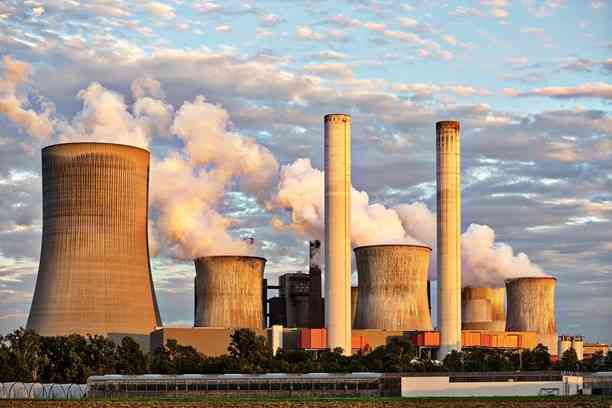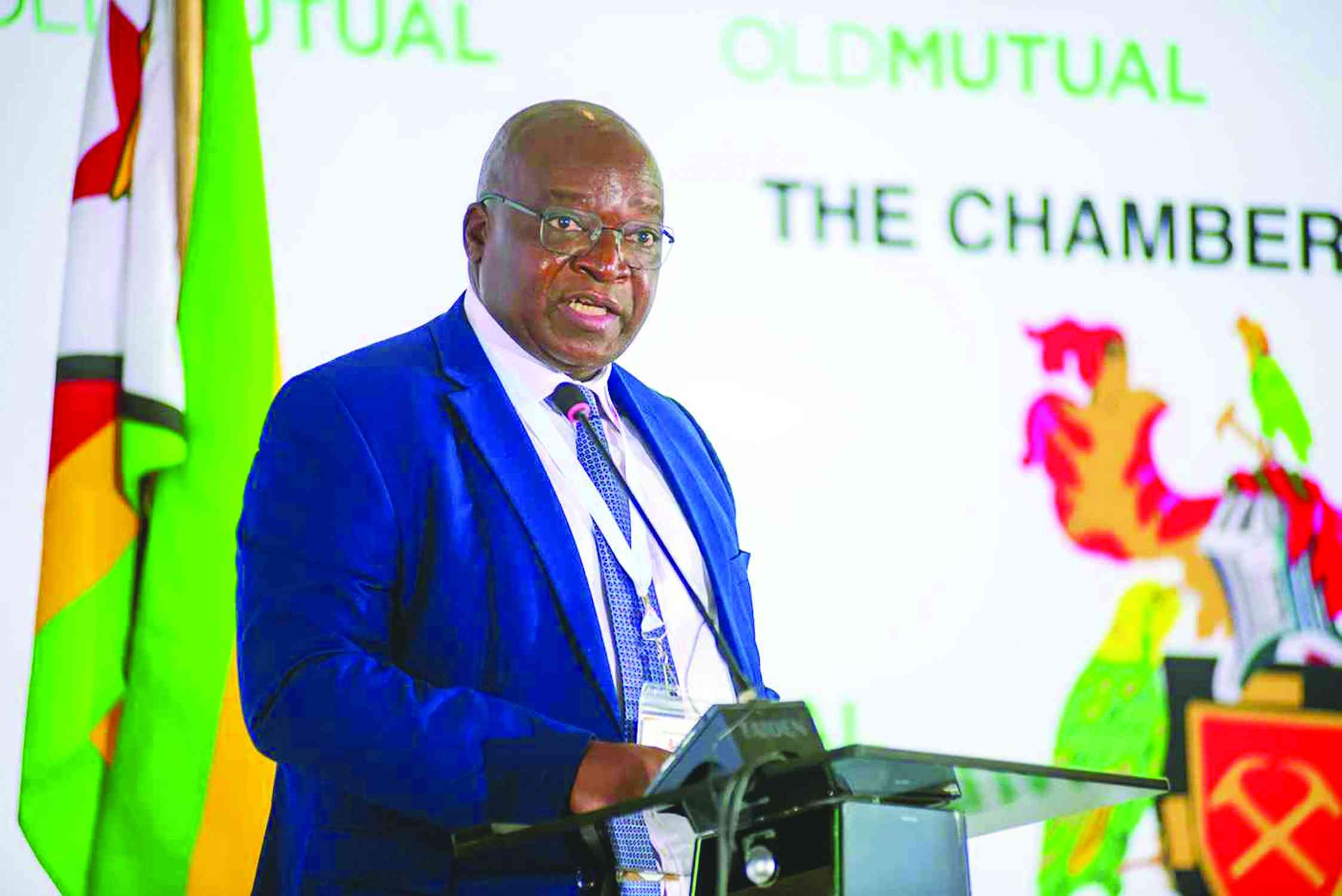
NUCLEAR energy is gaining prominence, as it stands at around 10% of the world’s aggregate power generation, with over 400 Gigawatts of capacity.
More African countries have taken a clear government position, with the intention to have functional plants from as early as 2030.
This first, of a two-part series, outlines the elementary issues associated with nuclear power, such as cost, advantages and disadvantages.
The next issue will provide detail on Zimbabwe’s policies and steps towards producing nuclear energy, with suggestions on how the country can utilise its strengths to ensure that it harnesses the benefits of nuclear, guarantees energy security and diversifies the country’s energy portfolio.
Cost and choice of scale
Large nuclear power plants are the standard model used in nuclear energy technology. They vary in size from 1000 MW to 4000 MW. On the other hand, there is a smaller alternative, known as the Small Modular Reactor (SMR).
SMRs are built to produce between 100 MW- 600MW of electricity. The choice between a large plant or an SMR depends on factors, such as affordability, location of the plant and speed with which the plant should be brought online (provide electricity).
Large nuclear plants have a higher capital expenditure requirement than their alternative (SMR's). Huge plants can cost as much as US$7 000/ kW (or US$7 billion for 1000 MW).
- The case for nuclear energy
- Stop the ‘Munich’ analogies
- Negative sentiments toward China grow in Visegrád nations
Keep Reading
The OECD Nuclear Energy Agency's (NEA)’s 2020 capital cost estimates of building a conventional nuclear plant ranges from US$2 157/ kW in South Korea to US$6 920/ kW in Slovakia.
For China, the value was US$2 500/kW or only US$2,5 billion per 1 000 MW. The differences in cost are dependant on the country’s available skilled personnel, technology for fabrication, government’s experience in handling nuclear projects, etc.
On the other hand, the smaller SMRs can be as low as US$3 000/ kW (US$3 billion for 1 000 MW). This is still about twice the cost of establishing a coal fired plant, however.
For instance, Hwange unit 7 and 8 expansion, provided 600 MW to the grid, for only US$1,5 billion. Small Modular Reactors have an additional advantage in that they provide room for expansion or scalability. This means that, after installing a 100 MW nuclear reactor, another 200 MW can be added at the same site, in the future.
Additionally, since they (SMR's) take up less space, there is location flexibility, whereby they can be installed almost anywhere. This is not the case for large plants, which depend on availability of large amounts of space.
Large nuclear plants also need massive amounts of water for cooling.
Resultantly, they are typically established close to an ocean or sea, where water can be drawn nearby, using pipes or other applicable technologies, from the source to the plant.
This, however, is not the case with SMRs as they can operate even in arid regions. The higher upfront cost of a large reactor does have an upside to it, as it translates to scale efficiencies, through the full life of the plant.
In essence, it means that, by the end of its life cycle (40- 60 years), the larger plant would have produced more efficient and affordable power than the SMR.
To put it another way, this also means that nuclear plants are expensive to build but cheap to run. This is not only true when comparing the scale and efficiency of nuclear plants of different sizes, but also when comparing with other energy sources (coal, gas and oil, etc).
For empirical figures on overall energy costs over a plant's lifetime, the United States EIA in 2017 published the electricity cost per unit of nuclear plants to be brought online in 2022, comparing them with other energy sources.
The numbers were; 9,9c/kWh (advanced nuclear), 5,7-10.9c/kWh (natural gas), 12,3c/kWh (coal), 14,6c/kWh (offshore wind), 18,4c/kWh (thermal solar).
This clearly outlines that nuclear energy is cheaper. Additionally, The Canada West Foundation (an independent public policy think tank), posits that total fuel costs of a nuclear power plant in the OECD are typically one-third of those for a coal fired plant.
Understanding that coal is the least expensive fossil fuel shows that nuclear is, therefore, outstandingly cheap.
Pros
Apart from affordability, as outlined above, nuclear energy is a consistent source of electricity supply. This is unlike renewables, such as hydro-electricity, solar and wind.
Renewables cannot consistently supply households and industries with power in the absence of back up from more reliable sources, such as coal or nuclear power plants.
Proponents of solar and wind power, tend to either be ignorant or conveniently forgetful, such that they place this glaring issue in the background, when they advocate for renewables.
Solar power generation drops in the absence of sunlight and is dependent on storage mechanisms such as batteries, for example, during the night.
Available storage mechanisms cannot provide a national grid’s peak energy demands. This is the same for wind, tidal energy, and other renewables.
Coal, oil and gas are actually more consistent sources of energy to the grid, as they produce a predetermined amount of power, as long as they are handled with prudence.
Even though the mentioned fossil fuels are reliable, they still perform less than nuclear energy in terms of reliability and consistency. Of all the fuels, it is thus easier to plan on generation capacity using nuclear power.
The fuel used in nuclear plants is made up of enriched uranium, otherwise known as U-235. To describe the potency of uranium, it is vital to compare it with other sources.
It is reported that a tonne of coal produces 8 Megawatts of energy. On the other hand, only 1kg of uranium is understood to produce 24 000 Megawatts.
As a result of the density of energy in enriched uranium, it is packaged in pellet form, and sometimes in small pebbles, which can fit easily into an adult human's hand.
Resultantly, the fuel can be stored at the plant, in batches that can last for months, or sometimes, years. Logistical costs of moving nuclear fuel are therefore limited and movement is more efficient, owing to the physical size of the fuel.
Contrastingly, due to the relative inefficiency of coal (compared to enriched uranium), plant operations require meticulous planning and massive amounts of physical space, to ensure that there is consistency in power supply.
The downside is that transport costs are higher and reliability of power can be altered when the merchandise is exposed to elements such as snow or rain.
The further that the power plant is from the energy source, the more complex these problems become. This implies greater challenges for energy importing nations, such as those in Europe, in this regard.
Another advantage of nuclear power is that building the plant takes thousands of workers, huge amounts of steel, concrete and components, etc. It takes more industrial resource inputs than a coal, wind or solar plant.
This implies that there will be improved economic activity even from the construction phase. Additionally, local cement and steel manufacturing companies will register windfall profits as their products are a crucial input in the establishment of the plant.
Since Zimbabwe has local producers of both cement and steel, the revenue earned by these industries is re-circulated in the economy.
Additionally, nuclear energy supports jobs and further economic growth, once the plant is completed. In this regard, observations noted in other countries may add clarity.
About 15% of Canada's electricity is powered by nuclear plants. The nuclear industry in the country is responsible for creating and supporting approximately 76 000 jobs.
It is also crucial to note that, 87% of those jobs are skilled with 47% being highly skilled technical jobs. Such a scenario leads to more activity at domestic trade schools, thereby, introducing and supporting more technical people in the local economy.
The nuclear industry in Canada also has an impact of US$17 billion per year on the country's GDP. In 2017, South Africa's Eskom commissioned a study, which reported that from 2012 to 2016, economic activities supported or stimulated by the Koeberg Nuclear Plant (in Cape Town), unveiled around US$3,9 billion in economic activity.
Some 1 786 direct jobs were created during the same period, with an additional 35 000 indirect jobs each year.
Furthermore, growth and depth of the nuclear industry also drives advances in healthcare, food safety and agriculture, etc.
Pests, soil productivity and diseases, such as, cancer can be controlled and resolved with the aid of nuclear technology.
Cons
Nuclear has been paused, rejected and refused by some countries for various reasons. Economically, not many nations can afford the exorbitant upfront costs, or capital expenditure, required to set up a nuclear plant.
Apart from cost, a nuclear plant takes a lot of time to build. This does not work well for countries or industries which need to add extra capacity to the grid, in the short term. On average, a standard reactor takes between six to twelve years to construct.
Even the SMR (small modular reactors) can take up to five years to build. Therefore, any country in need of nuclear generation, needs to plan strategically in order to serve demand in a timely manner, without compromising economic growth, due to missing project timelines or a mismatch of demand growth and the completion of the power plant.
Waste disposal is a highly contentious issue in nuclear technology.
Residue from reactors is highly radioactive and can remain toxic for hundreds of thousands of years, according to scientific determination.
Public outcry and protests against disposal of nuclear waste close to residential communities, is not uncommon, especially in Europe. Nevertheless, to Africa's advantage, the continent has massive land space, which provides for a number of alienated places to store and dispose of the waste. To put the size difference in perspective, the distance between London and Rome is similar to that between Cape Town and Pretoria.
To add to that, South Africa alone is about the same size as Western Europe.
Through the years, some notable nuclear reactor accidents have been reported, giving rise to fears that the technology poses a safety risk, in the case of plant malfunction.
One of the largest nuclear accidents on record is the Chernobyl nuclear disaster of 1986. The accident happened when safety procedures were not adhered to and one of the reactors overheated until it melted the barrier, which was meant to contain heat and radiation from the plant.
Resultantly, radiation was released into the atmosphere. The consequences of the accident have been so grave, such that, work to add more protective layers to the reactor and clean up radioactive waste, is ongoing, to this day.
However, after Chernobyl, the isolated accidents have been kept under control with no injury to people or loss of life.
Concerns also exist that the same technology used to make nuclear energy, can be easily adapted and rerouted to manufacture nuclear weapons. This can become more unsettling when the weapons end up in the hands of terrorists, as lives may be lost, needlessly, in the case of an attack. On the other hand, the fact that existing nuclear weapons can be repurposed and used to provide fuel for power plants may be nuclear energy’s ultimate redemption.
- Tutani is an entrepreneur and political economy analyst. — tutanikevin@gmail.com.










